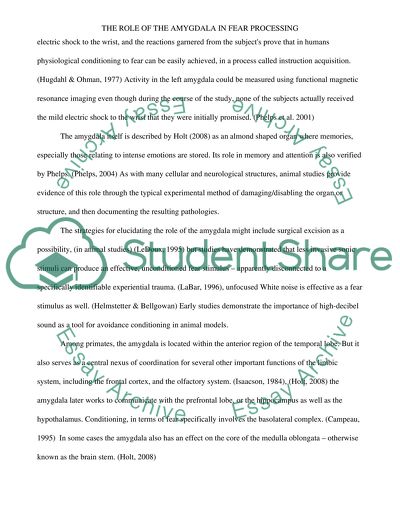Cite this document
(The Role of the Amygdala in Fear Processing Report, n.d.)
The Role of the Amygdala in Fear Processing Report. https://studentshare.org/psychology/1590987-explain-how-neuroscience-research-with-humans-and-animals-has-advanced-our-understanding-of-the-role-of-the-amygdala-in-fear-processing
The Role of the Amygdala in Fear Processing Report. https://studentshare.org/psychology/1590987-explain-how-neuroscience-research-with-humans-and-animals-has-advanced-our-understanding-of-the-role-of-the-amygdala-in-fear-processing
(The Role of the Amygdala in Fear Processing Report)
The Role of the Amygdala in Fear Processing Report. https://studentshare.org/psychology/1590987-explain-how-neuroscience-research-with-humans-and-animals-has-advanced-our-understanding-of-the-role-of-the-amygdala-in-fear-processing.
The Role of the Amygdala in Fear Processing Report. https://studentshare.org/psychology/1590987-explain-how-neuroscience-research-with-humans-and-animals-has-advanced-our-understanding-of-the-role-of-the-amygdala-in-fear-processing.
“The Role of the Amygdala in Fear Processing Report”. https://studentshare.org/psychology/1590987-explain-how-neuroscience-research-with-humans-and-animals-has-advanced-our-understanding-of-the-role-of-the-amygdala-in-fear-processing.


